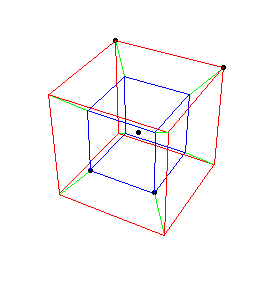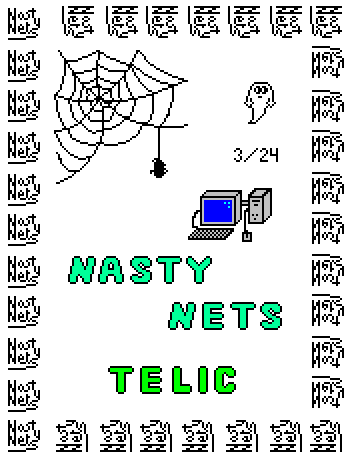View current page
...more recent posts
This just popped up in the Rhizome Raw* RSS feed:
Public tribute for Jean Baudrillard on World of Warcraft.I shouldn't laugh at this, but now whenever I hear "World of Warcraft" I can't get the image out of my head of the South Park episode with the bloated pasty middle aged man with skin diseases who sits at his computer all day eating junk food and racking up obscene numbers of points killing everyone in Warcraft. Would Baudrillard have "gotten" that?
Ars Virtua will be holding a public tribute to honor the late social and political theorist Jean Baudrillard. Jean Baudrillard's criticisms and view on Simulation are influential to our discussions of the MMO.
This short program will be held on the WoW Kilrogg server, 4-5pm PDT, March 17, 2007 near Orgrimmar. Please send tell to Zuluu upon arrival in-world for the location.
Ars Virtua is a new media center and gallery located primarily in the synthetic world of Second Life. It is a new type of space that leverages the tension between 3-D rendered game space and terrestrial reality, between simulated and simulation. Ars Virtua is sponsored by the CADRE Laboratory for New Media.
*Update, 2011: The Rhizome link has been changed to http://rhizome.org/announce/events/47095/
From Paul Slocum's blog comes this item about an alternative for working musicians to the iTunes store. It's called SNOCAP, started by the original Napster guy. The scheme makes it possible for you to have a "store" on MySpace (or any other page you control) and sell non-DRM'd mp3s for 99 cents, of which SNOCAP keeps 39 cents.
Downside: they want access to your bank account to debit and credit funds electronically. I'm just wrapping my head around "Check 21"--the law that lets utilities and credit card companies dun your account by "electronic funds transfer" when you send them your monthly check. (Yes, I still like a paper trail.) How'd that get passed? Oh, right, never mind. You'd probably want to set up a separate account, which costs extra if the bank considers it a business account.
Update: Jim has more on the big picture and SNOCAP.
Dallas Morning News on John Michael Boling's and Javier Morales' video Blood Fantasy, showing at And/Or Gallery:
In quoting 1980s video footage, the two artists twist the temporality of "obsolescence." We recognize that the styles of clothing, hair and eyewear are out-of-date yet the crispness of video, its color and image resolution, seems perennially present. Blood Fantasy uses a similar grammar of mixed imagery, creating a greater sense of abstraction in the juxtaposition of figures and patterns: aerobics dancers, King Tut, a woman breastfeeding, and sequences of pixilated light in blue and fuchsia.D'oh, I've seen this video, and somehow the writer forgot to mention the footage of the woman hung upside down having her throat cut, from a low budget horror movie that looks a lot like the Berg beheading video, production value wise. Gouts of stage blood spurt from her neck and pour down her face as she screams. You can't miss it--it's about a minute into the DVD and lasts about 30 seconds. It probably has something to do with the title, Blood Fantasy.
This information was brought to you by BlogsTM--Your Supplement to Mainstream Media.

"Bonsoir Bonaire Variation" [mp3 removed]
Rescored "BB" for the "Exit Maurice" Sidstation patch (aka ChordMemry) with some filtering effects, for a slightly more rave-y feel. Kept the original electric piano plus the bare bones of the drums for this variation.
hypercube artist unknown
"Maurice Flambeed" [mp3 removed]
Another tune entirely, but using the same patch as "Bonsoir Bonaire Variation," plus an analog four-part bassline I'm really happy with.
camille.pb on the interview I did with Paddy Johnson and Michael Bell-Smith last year:
...they discuss the traditional distinction between low art and high art and bring their new perspective, consisting in making the most out of easy webtools (via an interesting discussion of the animated gif's qualities for instance). The phrase Software art as I study [it] can be deceiving: one could think it has to do with super high-tech up-to-date and expensive software used by experts. Same for the word art, which could easily be interpreted by its application in the high fields of art history and institutions. When the two come together, though, here is the twist: they seem to degrade each other - and that's where the fun is: "art becomes web junk" says M. Bell-Smith. [...The artists] also develop a non-political stance, and it's interesting to find a way out of this boring debate of what is political art. It gives way to an idea of art practice that is not political by representation but by practice, by the context in which it is elaborated, by other stuff that the artist does and that he does not call art; Tom Moody's blog is filled with newspapers' extracts on american political life but in the interview he claims the right to political irresponsibility. I once heard the same words spoken by the net.art duo JODI: "the freedom to be irresponsible in front of one's computer," says Dirk Paesmans (in Matthew Mirapaul's 4/21/03 NY Times article "Distorting the digital mechanism").A good role model is the American proto-Pop abstractionist Stuart Davis, who was active politically but largely kept it out of his art. Writing in The New York School: A Cultural Reckoning, 1973, Dore Ashton tells an anecdote about his formative years, before the First World War:
[committed socialist John] Sloan was the artistic director of the radical magazine The Masses, to which Davis, Glenn Coleman, and Art Young contributed visual commentaries, based very often on their observation of the city, especially of the impoverished immigrants. Not long after Sloan arrived at The Masses, an ideological battle developed in which Max Eastman, John Reed, and Art Young insisted that only an art of "ideas" had a place in the magazine, by which they meant an art fully captioned. Art Young, whose life, as he wrote, was dedicated to the destruction of plutocracy, was an uncompromisig propagandist. Opposed to them were Sloan, Coleman, and the young Davis, who stood for "pure" art (genre scenes that needed no captions). In the dispute that ended his cartooning career, Davis learned, as he said, to be forever suspicious of "an art of ideas" and in fact, even when he was in the thick of political agitation later in the thirties, he never again brought his art and politics together.(To reiterate what I said in the interview: "Art should be like dreaming, and dreams don't always take us to good places, or places we want to go. Is it good for art to be 'apolitical' when the country is being driven off a cliff by fools? One person's frivolous pleasure states could be another's rejection of, or opting out of, the dominant control systems. I'd rather allow art to be 'immoral' and 'irresponsible'--and then analyze why I feel that way.")

Poster by T. Hallenbeck for Nasty Nets Los Angeles event. No idea what this event is about except that my left coast sisters and brothers will kick the asses of rival surf club supercentral.
From musician/popstar Thomas Dolby's blog. He recently attended the TED conference (Technology, Entertainment and Design) and lists this as a highlight:
-My Indian buffet lunch table today with Richard Branson, Peter Gabriel, Hans Rosling and Darryl Hannah (!) as they discussed how to get the world’s "Elders" into war situations to help resolve conflictsLimousine liberals, e-e-ew. Surely we've learned from Iraq that there are no Elders, and the main beneficiaries of "getting us into war situations" are arms merchants, support for whom needs to be ratcheted down, not up. In fairness to Dolby, he possibly means negotiation, not troop involvement in foreign conflicts, but it's doubtful.
